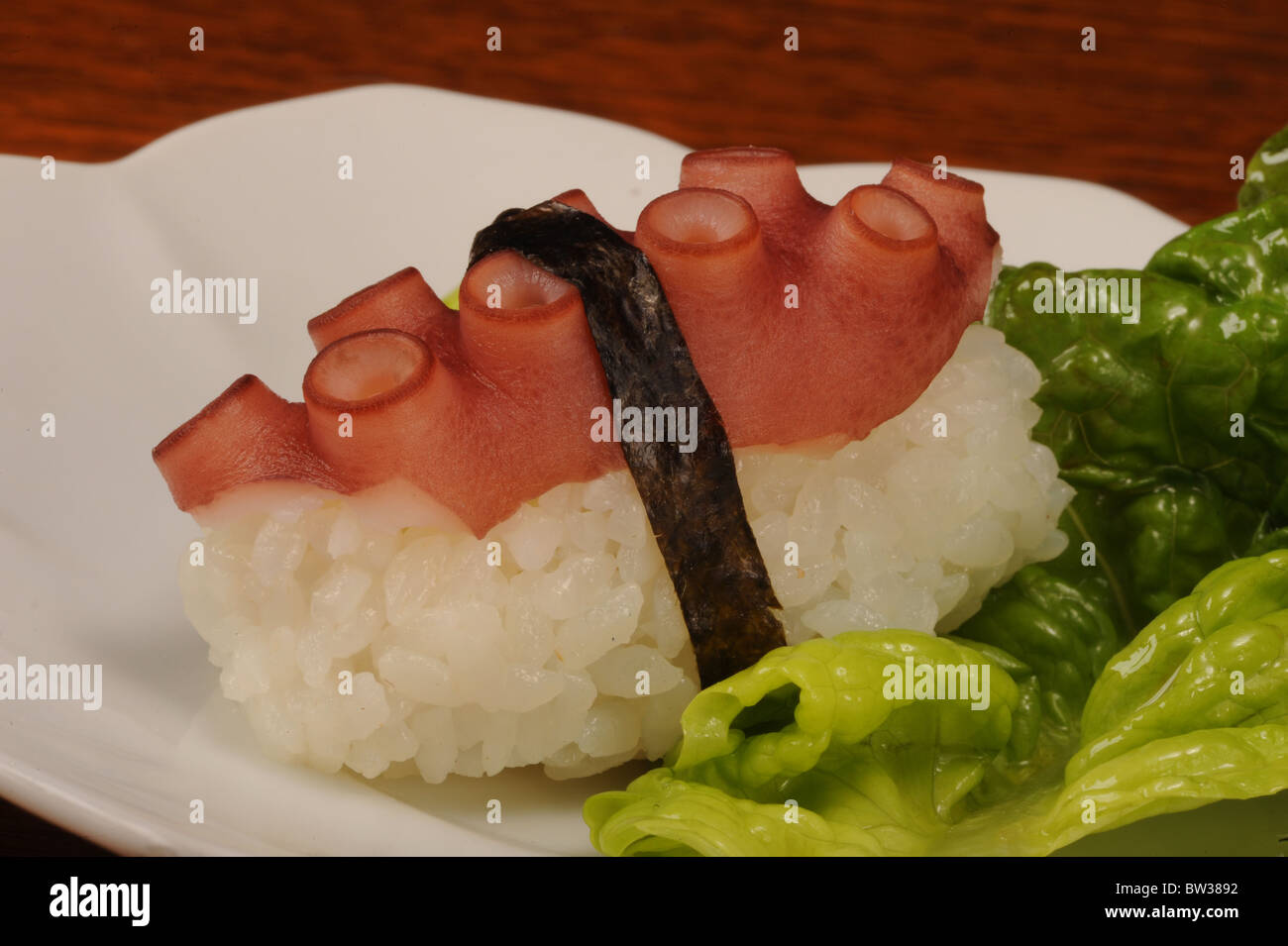
The nature of the tip generally not only makes cleaning more difficult, but also promotes the growth of bacteria if the small suction cups are not cleaned properly. The size and distance of the suckers become smaller the closer they are to the tip of the tentacle. Rather, there is evidence that poisoning has occurred because the tentacle tips can be a potential breeding ground for bacteria. This “urban legend” is based neither on facts nor on scientific research. There is still a persistent opinion, especially among older Japanese, that poison would accumulate in the tips of the tentacles.

It is therefore recommended to avoid seasoning sauce ( nitsume), which is unfortunately quite common in simple sushi restaurants.


The taste of tako is intense but without being obtrusive. Nevertheless, tako loses a lot of flavour and texture if it is stored too long, cooled too much or prepared without the necessary finesse. The preparation of tako is more elaborate but not necessarily more complex compared to many other ingredients for sushi or sashimi. In order to adhere better to the rice, a wave pattern, similar to a washboard, is often added to the piece ( neta or tane) when cutting ( sazanami-kiri, さざなみ切り). When preparing nigirzushi, either distinctive or hidden cuts are added to the tako meat, otherwise the firm meat would not adequately follow the shape of the rice ( kakushi-bōchō, 隠し包丁). Correctly prepared tako sushi or sashimi is pleasantly fleshy, tender, juicy and the consistency of the slightly crunchy suction cups offers an exciting sensory variety. Lowering the temperature for cooling or freezing has a negative effect on the flavours and texture. If tako is left to rest for some time after cooking, until it has cooled down to a temperature range between room and body temperature, it is most tasty. The meat is characterised by a pleasing texture, tenderness and an exquisite taste. In general, tako is rarely eaten raw ( nama tako, 生蛸) and is a popular ingredient ( yude-dako, ゆでだこ) for sushi and sashimi after cooking.


 0 kommentar(er)
0 kommentar(er)
